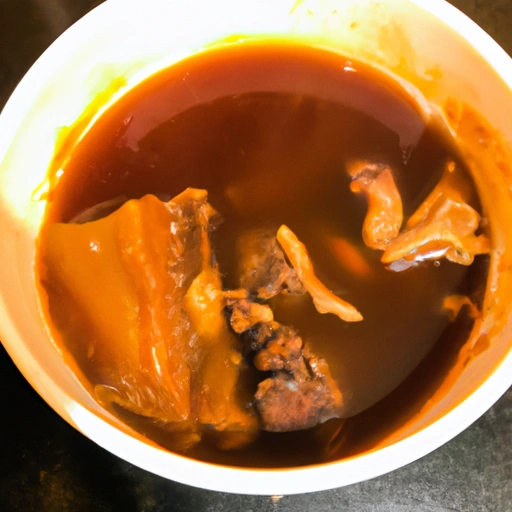Veal Stock
Description

Veal stock is a rich, flavorful liquid made by simmering bones, meat trimmings, and aromatic vegetables. This culinary staple is highly prized by chefs for its delicate yet deep flavor profile, which enhances a multitude of dishes. Veal stock is often used as a base for sauces, soups, and braises, providing a luxurious mouthfeel and complexity to recipes. Its preparation involves roasting veal bones to a golden brown before slowly cooking them with vegetables, herbs, and water to extract as much flavor and nutrients as possible.
Common uses
Veal stock is commonly used as a base for rich sauces, gravies, soups, and risottos. It is also utilized in braising liquid for meats and vegetables, contributing to their tenderness and flavor. In addition to these uses, veal stock can be reduced to create a glaze or demi-glace, which imparts a concentrated essence to finished dishes.
Nutritional value
Calories
Veal stock typically contains a low number of calories, with an average of 17 calories per 100 grams (about 3.5 oz).
Protein
It is a good source of protein, providing approximately 4 grams per 100 grams (about 3.5 oz).
Fat
The fat content in homemade veal stock can vary but is generally low, especially if the stock is defatted after preparation.
Carbohydrates
Veal stock contains minimal carbohydrates, as it primarily consists of proteins dissolved in water.
Vitamins
While not a significant source of vitamins, veal stock may contain small amounts of B vitamins derived from the meat and bones.
Minerals
It is rich in minerals such as calcium, phosphorus, and magnesium, which are leached from the bones during the simmering process.
Health benefits
Veal stock is valued for its gelatin content, which is beneficial for joint health. The collagen from bones, when transformed into gelatin, can support joint function and potentially improve skin elasticity. Additionally, the amino acids present in the stock may contribute to a healthy gut lining.
Potential risks
Because veal stock is made from animal bones, it may contain high levels of sodium if salt is added during the cooking process. Individuals on a sodium-restricted diet should be mindful of their intake. Furthermore, the source of the bones can also be a concern; using bones from non-organic or hormone-treated animals may carry potential health risks associated with these practices.
Common recipes
Veal stock is a foundation in recipes like French onion soup, osso buco, veal jus, and classic sauces like espagnole and velouté.
Cooking methods
The preparation of veal stock involves roasting, simmering, and straining to achieve a clear, flavorful liquid. It can be used immediately, frozen for later use, or reduced to intensify its flavor.
Pairing with other ingredients
Veal stock pairs exceptionally well with mushrooms, red wine, root vegetables, and fresh herbs like thyme and rosemary.
Summary
In conclusion, veal stock is a cherished ingredient with roots in European cuisine that has become essential in kitchens worldwide. It is low in calories and carbohydrates but high in protein and minerals, offering a variety of health benefits. While it is versatile and beneficial, there are potential risks to consider, especially concerning sodium content and the source of the veal bones. When used in cooking, veal stock imparts a richness to sauces, soups, and braised dishes, making it a key component in elevating the flavors of countless recipes.